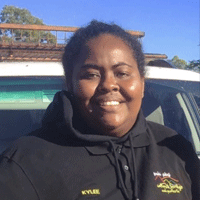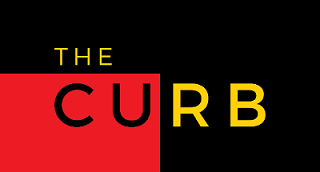In early 2020, when Australia was in the midst of some of the most horrific fires it has ever seen, the ABC’s Q&A, doing what Q&A does, took advantage of the situation and lined up a panel of guests to discuss the situation.
One of the panellists on the episode was Victor Steffenson, and Indigenous fire practitioner, who was there to help explain the benefits of utilizing Indigenous land management skills. Steffenson spoke with knowledge and charisma and left many in agreeance.
The time is now to listen to Indigenous people.
But what do the Indigenous methods of burning look like?
Firesticks will show you.
Firesticks a short documentary that follows Victor, Kylee Clubb and Lewis Musgrave as they conduct a Traditional Burn Workshop on Kuku Thaypan country (QLD), with Aboriginal people from all over Australia also learning the methods.

While addressing the present Aboriginal people, Victor ensures that he speaks about safety. The safest thing is knowledge, he exclaims, before he warns of snakes and crocodiles.
As the Victor, Kylee and Lewis make their way through country with the mob who attended, the trio explain what they are doing, why they are doing it and the benefits for the land and the ecosystems that inhabit it. Victor explains that a healthy burn will “look after trees, animals and protect them from wildfire”.
During Firestick, differences in the traditional methods and the methods of park rangers are also discussed. The differences are tangible, and easily explainable. It also shows how it positively impacts the community involved.
Firesticks is a special film; its only problem is that it’s far too short.
But in the short running time, the charismatic team of Kylee, Lewis and Victor convincingly demonstrate why traditional Indigenous burning methods are important, but it also leaves you wanting to learn more.

Hear from Co-Director Clare Richardson below:
When did you learn of traditional burning?
When I moved from the United States to Australia in 2018 I knew nothing of traditional burning– only that Australia experienced devastating wildfires most summers. It was while reading Bruce Pascoe’s book, Dark Emu, that I first learned certain environments require fire to maintain local species populations and that some trees even actively encourage fires to ensure their survival. Trees trying to catch themselves on fire! This ran counter to everything I thought I knew, and I started to research Indigenous organizations working with fire to learn more.
How did you become involved in the film?
I’m a broadcast journalist, and after reading Pascoe’s book I thought it would be fascinating to make a TV report profiling traditional burning. I figured it would resonate with an international audience as countries around the world are grappling with how to improve their land management. This was in 2019, the same year dozens of people had died in wildfires in Portugal and there had been catastrophic blazes in California and Brazil.
After calling around to a few Indigenous rangers around Australia, I was put on to Firesticks. They were planning to host a workshop for Indigenous peoples from all over Australia up in Cape York in July 2019, and we decided this would be a good time to film. Once my partner and I arrived at the workshop we realized there was more of a story to tell than would fit in a short news piece.
How was the shoot in regard to a remote location?
It was my first time driving a 4WD – roughly 5-6 hours up from Cairns and off paved highway toward the end. We camped out with the workshop participants for three nights in Cape York. Filming in remote locations is always an extra challenge, because we knew that once we were up there we wouldn’t have the chance to replace damaged or forgotten gear. We ended up bringing more backups than we needed and charging batteries two at a time off a generator. This was essentially a no-budget film– there were two of us with two cameras, mostly shooting on a Sony Alpha A7sII, which made for a more intimate experience than having an entire crew present. Workshop participants had traveled there from all over Australia to participate, so we weren’t the only ones making the long haul.
What sort of safety measures did the shoot require given the use of fire?
We trusted the local knowledge we were there to film. I grew up in California, which is also a very fire-prone state where people often lose their lives or property to blazes. So at first it was a bit frightening driving through burning bush toward a campsite without knowing where the next exit would be. Very soon we came to understand that the fire practitioners have a remarkable understanding of which direction and how far fires will burn. We learned a few safety tricks like leaving your car unlocked and keys in the ignition when getting out of the vehicle – don’t want to be locked out as the flames approach!
How was it working with Victor, Kylee and Lewis?
It was a delight and a privilege learning from Lewis, Victor, and Kylee. I’m so grateful for their time and thoughtful explanations while they were also busy organizing the workshop, as well as the hospitality of Lewis and his family on Kuku Thaypan country. Their knowledge goes far beyond just traditional burning. As Victor points out, it often happens that Western researcher’s cherry pick certain parts of knowledge of traditional burning, when really it requires a complex and interwoven understanding of the local environment.
Directed by: Clare Richardson and Henning Goll
Watch Firesticks via Melbourne Documentary Film Festival here.



